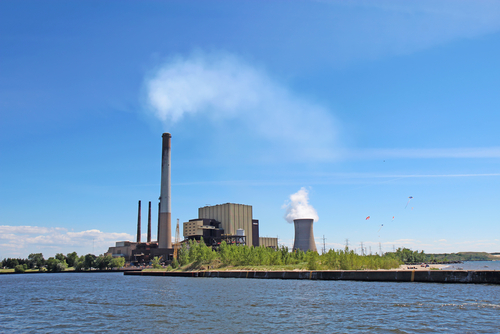Indiana weighs how to best manage transition from coal to renewable energy

Indiana is confronting a complicated choice faced by a number of U.S. states: whether to close coal plants in favor of advancing renewable energy or to keep them open to support jobs.
The electricity generation portfolios of Indiana electric utilities are becoming more diversified as they shift toward including more renewables and gas-fired generation facilities and less on coal-fired generation.
However, in March, Gov. Eric Holcomb signed into law House Enrolled Act (HEA) 1414, a bill that makes it more challenging for electric utilities to retire their coal plants in Indiana.
“HEA 1414 marked the second year in a row that legislation was introduced in Indiana to attempt to prevent coal plant shutdowns. In 2019, supporters of the bill argued that shutting down coal would harm reliability,” said Caryl Auslander, policy director for Indiana Advanced Energy Economy (AEE). “When those arguments didn’t win over many people, 2020 brought calls to save coal jobs.”
HEA 1414 was authored by Rep. Ed Soliday, a Republican who serves as chair of the House Utility Committee and co-chair of the 21st Century Energy Policy Development Task Force. The task force commissioned a report from the Indiana Utility Regulatory Commission to look at the pros and cons of closing the state’s coal plants.
The Aug. 14 report found that coal plant closures could lead to the loss of more than 1,000 jobs and more than $10 million in tax revenue.
“Until recently, load growth drove utility resource acquisition decisions. But load growth has slowed markedly over the last decade and is generally projected to increase slowly or decrease slowly depending on the circumstances of the specific utility forecast,” the report said. “This is the case for Indiana utilities and across the Midcontinent Independent System Operator (MISO) and PJM Interconnection, LLC (PJM) multi-state regions. In this circumstance, the driver of changing resource portfolios is changing economics and technology.”
The commission said it must evaluate the timelines for managed transitions, and how quickly a company “can change its generation resource portfolio in response to competitive market economic signals while maintaining the capability to provide reliable and resilient electric service at the lowest reasonable costs to the retail customer.”
According to Danielle McGrath, president of the Indiana Energy Association, the task force will begin meeting once again this fall to explore various matters affecting the state’s utilities industry, and the energy trade association will be engaged in that process.
Meanwhile, many other states are considering legislation to attract new energy investment, according to Auslander, specifically advanced energy resources. “The advanced energy industry has opposed attempts to bail out uneconomic coal plants, particularly in Indiana where advanced energy resources are the most cost-effective investment. Already, utilities are making investments in wind, solar, storage, and energy efficiency with an estimated savings of over $4.3 billion. Any legislation that attempts to keep coal online only prevents consumers from getting these benefits.”
The bill was amended several times throughout the legislative session, with the final version establishing a “sunset” or expiration date for the legislation of May 1, 2021.
“As we head into the 2021 session, we anticipate that the coal industry will come back for a third session to look for support, Auslander said. “We’ll work to ensure that legislators remain accountable to their word to not support legislation that would further pick the government over market forces at the expense of consumers.”
AEE sees many electric utilities taking the lead to transition away from coal to renewable energy resources that will directly benefit local economies through new energy investment and consumers by offering lower energy prices, she said.
For example, Vectren, which provides gas and/or electricity to more than 1 million customers in Indiana, released an Integrated Resource Plan in June that reflects a reduction in its use of coal and increase in its use of wind, solar, solar-plus-storage, and energy efficiency.
Nearly two-thirds of the energy included in Vectren’s plan would be generated from renewable resources, reducing reliance on carbon fuels and lowering carbon emissions by nearly 75 percent from 2005 levels. The plan replaces some older coal generation units with significant renewables, including a large percentage of universal solar, the company said.
The plan ensures reliability, while saving electric customers an estimated $320 million over the 20-year planning period, Vectren said.
